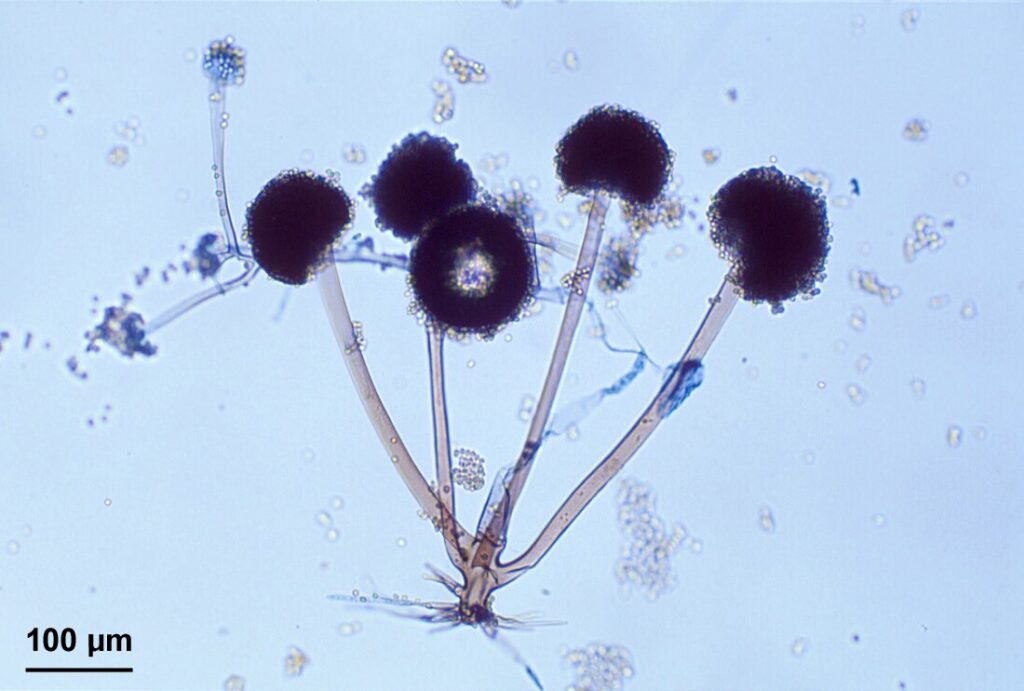
- Leading global fungal infection charity GAFFI has issued guidelines to help patients and carers manage the condition
Multiple reports from India have identified the otherwise rare fungal infection mucormycosis affecting many patients and leaving major disfigurement or death. High numbers have been seen in Gujrat, Maharastra, Karnataka, Tamil Nadu, Andhra Pradesh, Delhi, Chandigarh and Punjab but very few cases in the eastern part of India.
Professor David Denning, of The University of Manchester, UK and Chief Executive of GAFFI said:
“Mucormycosis is strongly linked to diabetes and diabetes is strongly linked to steroid treatment. The remarkable increase in cases in COVID patients, reflects poor diabetes control, worsened by steroids.”
Mucormycosis usually occurs later in the course of COVID-19 – typically after 8 days. It can occur after hospital discharge. Early suspicion and diagnosis is required.
Doctors and patients are advised to adopt the following stance to minimise the risk of this devastating infection:
- Oral or IV steroid therapy when used inappropriately and or in excess doses should be prevented by the strict use of national and WHO guideline.
- The biggest risk for mucormycosis is poorly controlled diabetes.
- Oral or IV steroid can precipitate diabetes for the first time and dramatically raise blood sugar.
- If oral or IV steroid is used, it should be used only in those requiring oxygen, at the lowest doses shown to be effective for the shortest time, according to WHO and national guidelines. Listen to the podcast for details.
- If oral or IV steroid is used, blood sugar should be monitored and if raised, aggressively treated to prevent mucormycosis.
- Steroid usage is also linked to another fungal infection which can be lethal, invasive aspergillosis. This is present in 5-30% of severely ill COVID-19 patients, regardless of diabetes, further emphasising the caution on excess steroid dose and duration. Inhaled steroid when used excessive can also precipitate aspergillosis.
The early clinical features of mucormycosis include unilateral sinusitis and nasal blockage, one-sided headache, swelling or numbness, toothache and loosening of teeth. Later features (it is a rapidly progressing disease) include blackish discolouration over the nose or palate, blurred or double vision, chest pain, worse breathing and coughing of blood.
Professor Arunaloke Chakrabarti Head of the Center of Advanced Research in Medical Mycology, PGIMER, Chandigarh and Senior Advisor to GAFFI declared:
“Even before COVID-19, mucormycosis was more common in India than most countries, partly because of the millions who have diabetes. It is a serious infection, requiring specific antifungal therapy and often many surgeries for cure, which is difficult even in the best clinical centres. Prevention is better than attempting cure.”
Dr Swarup Sarkar, Senior Advisor to GAFFI, ex-Chair of the Indian Council for Medical Research (ICMR) and ex-head of Communicable Diseases at the SE Asian Regional WHO office, said:
“Too many vague guidelines for managing COVID-19 are circulating leaving patients and many physicians unsure what to do. Here we offer straightforward advice in the attempt to minimize the devastation wrecked by COVID-19 and its fungal complications.”
Rapid guidance has been issued by FISF: FISF recommendation mucormycosis
Listen to the podcast about mucormycosis from Professor David Denning. He emphasizes:
“The Indian epidemic has a big lesson for many states and regions of India that has yet not experienced the recent wave of COVID -19 as well as for rest of the world. It is a wake-up call for use of strict evidence-based guidelines to fight COVID with its comorbidities and avoid unintended consequences of fungal infection.”